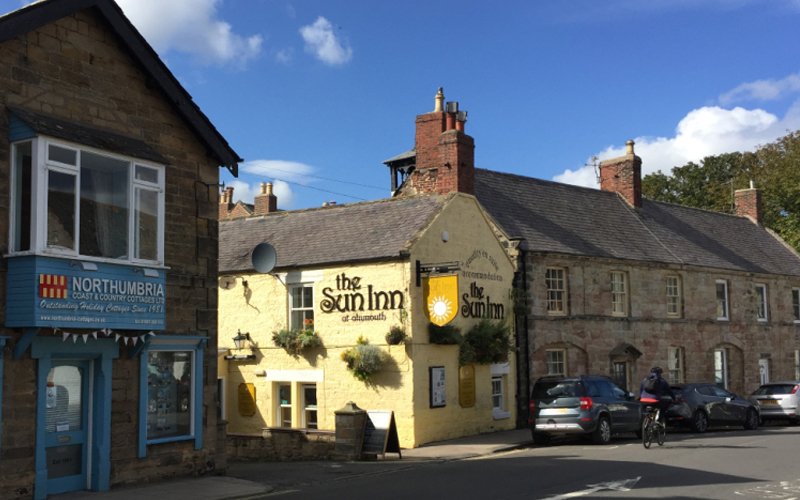As the name suggests, Alnmouth is situated at the mouth of the River Aln. The bigger town of Alnwick, famous for its castle and gardens, is situated about 6.5km inland.
The village was founded in 1150 and for centuries it was an active port for fishing and the shipment of grain to London and elsewhere.
It may have also harboured smugglers and, with 10 pubs in the village in the 18th century, visiting preacher John Wesley described it as “a small seaport town famous for all kinds of wickedness”.
Alnmouth does not appear to be a den of vice anymore but it is still well served by pubs. There are at least five, which is not bad for a village with only 500 or so permanent residents.
Wesley may have gained his poor impression of Alnmouth from the 17th century Schooner Hotel, which has an interesting past and a spooky reputation.
Notable guests, apart from John Wesley, have included King George III, Charles Dickens and actor Basil Rathbone, most famed for his portrayal of Sherlock Holmes.
In the 1600s, some of the aforementioned smugglers and other dodgy characters found shelter at the inn and murders, suicides and family massacres took place within its walls.
The hotel’s website explains, “Spirits of withered and demented souls haunt the whole hotel frequently. Apparently, the spirits don’t care about being seen.”
With over 3,000 sightings of 60 individual ghosts, the Paranormal Society has named the Schooner the Most Haunted Hotel in Britain.
The Schooner displays a “Haunted Hotel” sign outside. Clearly management considers that its creepy reputation attracts more people than it puts off.
By the end of the 19th century shifting sands had caused the estuary to silt up.
The opening of the railway in the 1840s brought tourism and today Alnmouth continues to be a pleasant and picturesque tourist and holiday home resort.
St John the Baptist Parish Church opened in 1876. It replaced an earlier Anglican Church on Church Hill on the other side of the estuary, which was washed away by a great storm in 1806.
Until the 1960s, a ferryman used to row people across the mouth of the River Aln.
The ferryman’s old hut has been refurbished and now contains a heritage centre with memorabilia related to the ferryman. It is thought to be the smallest museum in England.
Like many of the beaches on this coastline, it is lined with concrete anti-tank blocks, left over from World War II. They were intended to slow down any possible German invasion.
A nine-hole links golf course occupies a prime beachfront position. Founded in 1869, it is said to be one of the oldest courses of its kind in England.
On the slopes of Bracken Hill, formerly known as Battery Hill, stands a coastal battery built in 1861 to house the Percy Artillery Volunteers.
It was modernised during WWII as an anti-invasion measure. The hill is now a mini nature reserve and provides great views of the beach and golf course.
This article first appeared on Thrifty Traveller.

